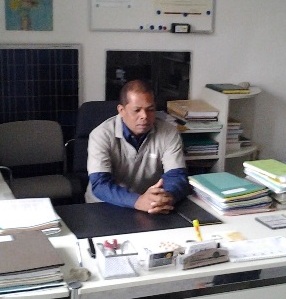Development of Traditional Bun Arrangement Module for 11th Grade Students in State Vocational High School
Abstract
The problem in this study is the completeness of student learning in traditional bun arrangement subjects is still unsatisfactory, students lack the initiative to find information about traditional bun arrangement to support learning, students lack understanding of the basic topic oftraditional bun arrangement, students are less skilled in making traditional bun arrangement techniques and the limitations time and resources for learning during learning activities in the delivery of traditional bun arrangement.Based on these problems, this study aims to develop a valid, practical and effective discovery learning module based on subjects in traditional bun arrangement. This development model plompis applied. There are three phase, namely initial investigation, prototyping and assessment. The evaluation method used is formative evaluation consisting of self evaluation, expert review, individual evaluation, and small group evaluation. The research instruments used were interview sheets, questionnaires in the form of validity in practicality sheet and objective. Validation results obtained as very high criteria. The practical results by students in small group and on field test obtained as high criteria, while the level of practicality by teachers obtained as very high. The result of hypothesis test show that there was a significant difference between the studentslearning outcomes of the experimental and the control class in the school. The result shows that the traditional bun arrangement module based on discovery learning has fulfilled the valid, practical and effective criteria.
Keywords
Full Text:
PDFReferences
Amri, Sofan. (2013). Development & Learning Model in 2013 Curriculum . Achievement of Pustakarya. Jakarta.
Belawati, TS, Andayani, Julaeha, S., and Pannen, P. (2007). Development of Teaching Materials . Jakarta: Open University.
Hosnan. (2014). Scientific and Contextual Approach in 21st Century Learning , Bogor: Ghalia Indonesia
Kurnia Meifeta Sari. (2014). Application of Teaching Modules for Hairdressing Competency ( Up Style ) Modification of Headscarves in Class XII of SMK Negeri 3 Jember. Jember: Surabaya State University. e - Journal . Volume 03 Number 03 of 2014
Munadi, Yudhi. (2008). Learning Media A New Approach . Jakarta: GaungPersada Press.
Marliati Nolis. (2016). Development of SanggulHairpiece Modules for Vocational High School Students (Smk) Hair Beauty Skill Packages. Semarang State University. Journal Of Educational Social Studies 5 (1) (2016)
Plomp, T. (2013). Education Design Research: An Introduction. In T. Plomp& N. Nieveen (Eds), Educational Design Research Part A: An Introduction (pp. 10-15). Enschede: Slo
Prastowo, Andi. (2015). Creative Guide to Making Innovative Teaching Materials . Yogyakarta: Diva Press Assessment Oriented Sociology Module Hots. Cakrawala Pendidikan Journal , June 2017, Th. Xxxvi, No. 2 (201-209)
Sani, Berlin. (2014). Successfully Implementing 2013 Curriculum . Jakarta: Kata Pena.
Ministry of Education and Culture. (2013). The Discovery Learning Model. Learning Technology Training Hand Out (edt). Jakarta: Ministry of National Education.
Mayer, Richard E. (2004). Should There Be a Three Strikes Rule Against Pure Discovery Learning? The Case for Guided Methods of Instruction. American Psychologist. Vol. 59 (1): 14-19.
Mahmoud, Abdel rahman Kamel Abdelrahman. (2014). Their Achievement and Metacognitive Skills. International Journal of Innovation and Scientific Research (IJISR), pp. 146-153.
DOI: https://doi.org/10.33258/birle.v2i4.520
Article Metrics
Abstract view : 264 timesPDF - 153 times
Refbacks
- There are currently no refbacks.

This work is licensed under a Creative Commons Attribution-ShareAlike 4.0 International License.

This work is licensed under a Creative Commons Attribution-ShareAlike 4.0 International License

_.gif)




















_.gif)



